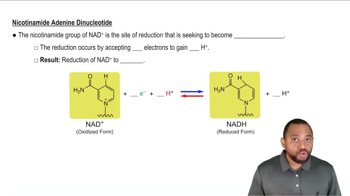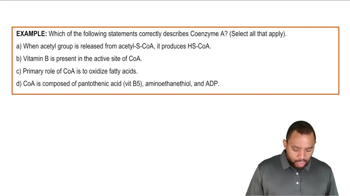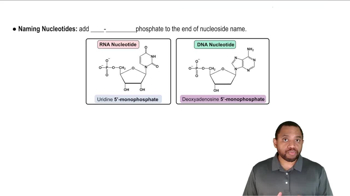Here are the essential concepts you must grasp in order to answer the question correctly.
Nicotinamide Adenine Dinucleotide (NAD)
Nicotinamide adenine dinucleotide (NAD) is a coenzyme found in all living cells, playing a crucial role in metabolism. It is derived from niacin (vitamin B3) and is essential for redox reactions, where it alternates between oxidized (NAD+) and reduced (NADH) forms. NAD is vital for energy production, particularly in cellular respiration, and is involved in various biochemical pathways.
Recommended video:
Nicotinamide Adenine Dinucleotide Concept 2
Niacin (Vitamin B3)
Niacin, also known as vitamin B3, is a water-soluble vitamin that is important for converting food into energy. It exists in two forms: nicotinic acid and nicotinamide, both of which are precursors to NAD. Niacin is essential for DNA repair, the production of steroid hormones, and maintaining healthy skin and nerves, making it a critical nutrient in human health.
Recommended video:
Metabolic Nucleotides
Metabolic nucleotides are organic molecules that serve as the building blocks of nucleic acids and play key roles in cellular metabolism. They include nucleotides like ATP, GTP, and NAD, which are involved in energy transfer, signaling, and enzymatic reactions. Understanding these nucleotides is essential for grasping how cells harness and utilize energy, as well as how they regulate various metabolic pathways.
Recommended video:
Naming Nucleosides and Nucleotides Concept 2






